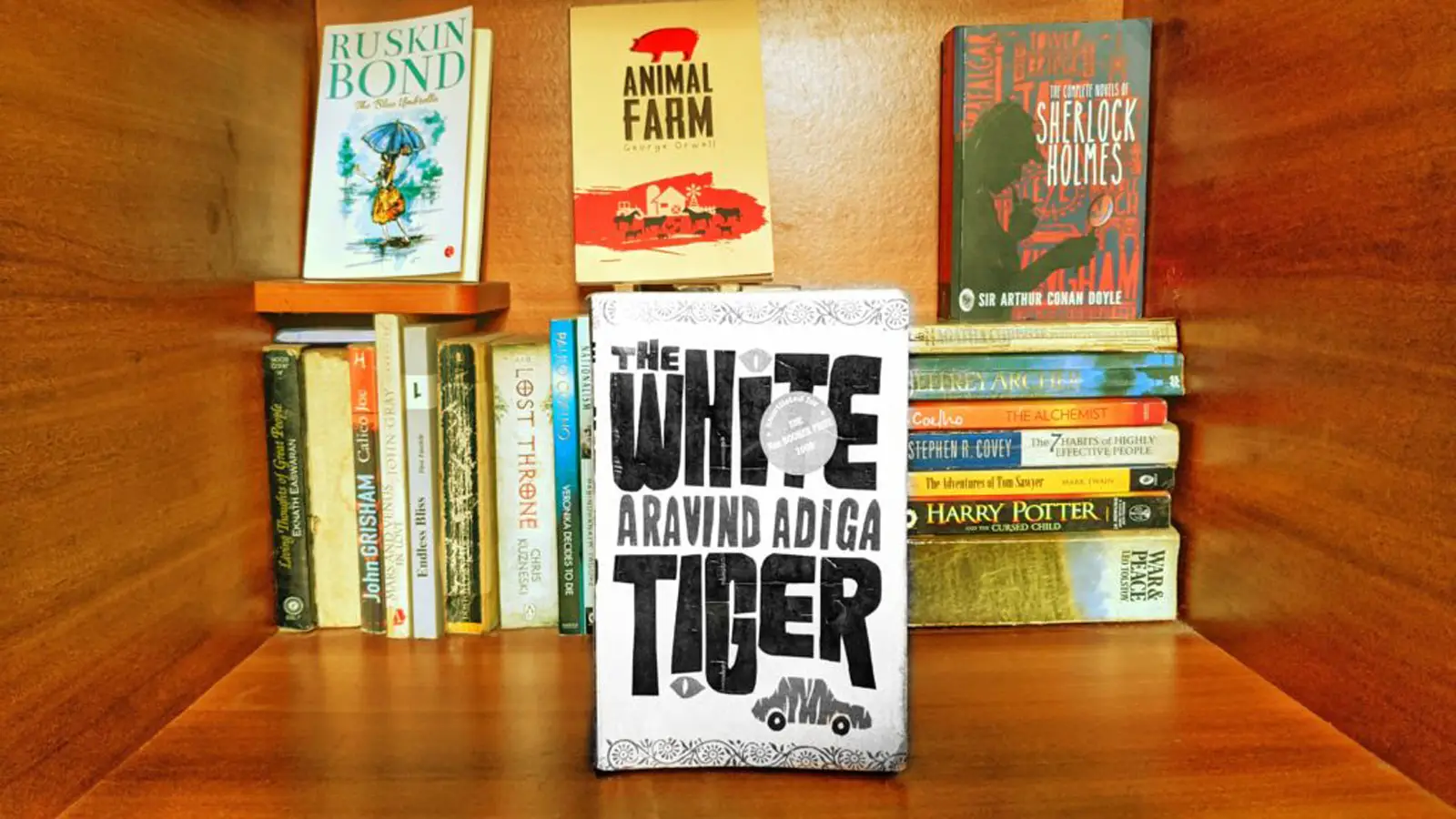The Razor’s Edge: A Journey Within
It was a regular call to my sister on a lazy afternoon, some years back. We were having a usual conversation and chatting about our routine lives. She told me about a worker at her hospital who left his job to take care of his wife and newly born baby. She was lamenting his foolishness—to have left such a secure job for something that, according to her, could have been managed by someone else.
To me, it sounded quite an amazing act—to leave a job to take care of your wife because you want to. Of course, it showed his love and care for his family. But more than that, it showed how free he really was! Despite his non-privileged background and his position on the economic spectrum, it must have been natural for him—as it is for many underprivileged people—to lead a life of minimum needs.
And how this non-reliance on needs gave him the freedom to exercise the choice of staying back at home amazed me.
This insight and reflection on a seemingly small incident led me to a deeper search for the meaning of freedom and bondage. What binds us? What frees us? Who is truly free? And what, really, is freedom?
The query inadvertently led me to a brilliant book filled with profound insights—The Razor’s Edge by W. Somerset Maugham.
A Book that Opens Questions
The Razor’s Edge, written as a first-person account by the author himself, was published in 1944. Written after the First World War and published just before the end of the Second, the novel explores the inner churn of a world in transition—caught between the materialism of the West, the trauma of war, and a rising quest for purpose.
It was one of the first books to introduce Indian spirituality to the West—as an answer to the growing existential crisis that material progress seemed to bring.
Set in the post-Great Depression era, across 1930s America, Paris, India and the French Riviera, the book’s title is derived from the Katha Upanishad:
उत्तिष्ठत जाग्रत प्राप्य वरान्निबोधत ।
क्षुरस्य धारा निशिता दुरत्यया दुर्गं पथस्तत्कवयो वदन्ति ॥
“Arise, awake, and attain wisdom from the wise. The path, the wise say, is as difficult as walking on the sharpened edge of a razor.”
The best answers are those which raise more questions. I believe this deeply, as they open avenues for deeper explorations. And this book does exactly that—it makes one reflect, think, and enquire.
Characters as Reflections of We, Us, the Society
The book is a mirror to the life we lead, want to lead, choose to lead, and sometimes regret along the way. It is about the futility of certain pursuits and the price we pay for our choices. Maugham observes and studies the characters with a detached lens, allowing the story to unfold as the characters do.
The protagonist, Larry, is young and altered by the First World War. Having witnessed the death of a fellow pilot up close, he is searching for answers, trying to understand the very purpose of life. This takes him from books to labor, from cathedrals to ashrams, from Paris to India, from sacred texts to a great Guru.
He turns away from wealth and a secure life—not with resentment, but with calm detachment. “I want to loaf,” he tells his fiancée Isabel, prompting her to leave him.
He doesn’t want a conventional life; he seeks wisdom. His journey is inward—not for success, not for security—but for clarity, which comes only by stripping life down to its barest truth.
Here is a person many of us admire, even want to emulate. But the path he has chosen, most of us know, is not easy.
Yet Larry’s journey is framed by the lives of others—people who, in their own ways, respond to life’s complexity. And it’s in these responses that the book comes alive.
Between Isabel and the Infinite
There is Isabel—who reflects most of us. We all want a secure life, the riches and wealth that offer choices, luxury, and security. Isabel is who we are—loving the idea of someone like Larry, admiring him, but unable to marry that idea.
Her choices aren’t ill-intended; they’re simply human. And that is what stings. We understand her—even when we wish she had chosen otherwise.
This life often binds us to the surface of a boundless world, not letting us take that deeper journey. And many times, we are resentful for the bondage this life brings.
Is wanting security an impediment to being free? Or is it freedom to have choices?
Other Lives, Other Reflections
In between are characters like Gray, whom Isabel eventually marries. He is gentle and dependable but can only survive within the conformities of the world. His life is undone by the economic crash—the Great Depression. His illness symbolizes a world that prizes only success. And it is under Larry’s touch that he begins to heal—a metaphor for the need for a new kind of wisdom, one not found in stock markets.
Does wisdom lie in conforming to the world around us—or in choosing a path uniquely our own?
Then there’s the socialite Elliott—flamboyant and snobbish, completely obsessed with status. He craves invitations to elite gatherings and basks in hollow validation. Even his charity, in the end, is a plea for recognition. It is his desperate need to belong that undoes him.
Can vanity and self-growth go together? Does the inward journey demand detachment?
One of the most impactful characters is Sophie—on self-destruct mode after a life-shattering tragedy. Once a person of passion and light, her descent into addiction is not just a moral failure—it is a response to grief that cannot be contained. When Larry tries to rescue her by marrying her, we hope. But her eventual fall and death—with Isabel having a veiled hand in it—reminds us how society can be more cruel than the addiction it condemns.
Here, Isabel represents society—polished and unrelenting.
When society condemns a person, do they have any real chance of regaining life?
Does the moral compass society holds serve the individual—or is it merely punitive?
When does society stop giving chances? And when does it begin punishing?
Are some people truly beyond repair?
A Timeless Read in a Constantly Changing World
Written nearly eight decades ago, The Razor’s Edge remains profoundly relevant in today’s rapidly globalizing and materially driven world. It serves as a reminder of the spiritual depth that India has to offer—a land that has long upheld the philosophy of Aparigraha, or non-possession, as taught by the Buddha. Though challenging, this path invites us to strive toward detachment, cutting through the bondages that limit our inner freedom.
Perhaps that worker—whom my sister dismissed as foolish for quitting his job—had touched upon a truth we often overlook. In his simple act of choosing family over security, of placing love above livelihood, he demonstrated a kind of freedom most of us only yearn for.
We often think of freedom as grand gestures, as life lived on our own terms. But sometimes, it is found in small decisions that reflect deep clarity—decisions unburdened by the weight of possessions, expectations, and societal validations.
For while most of us chase wealth and security, it is the pursuit of the divine within us, that can bring lasting peace.
The razor’s edge, after all, is not out there somewhere. It lies within.
The Razor’s Edge is a deeply rewarding read for those who appreciate introspective literature. It offers no easy answers, no dramatic climaxes, and no tidy conclusions. What it gives instead is something more enduring—a mirror to our inner lives, and a reminder that the path to truth, however narrow or sharp, is always worth walking.




